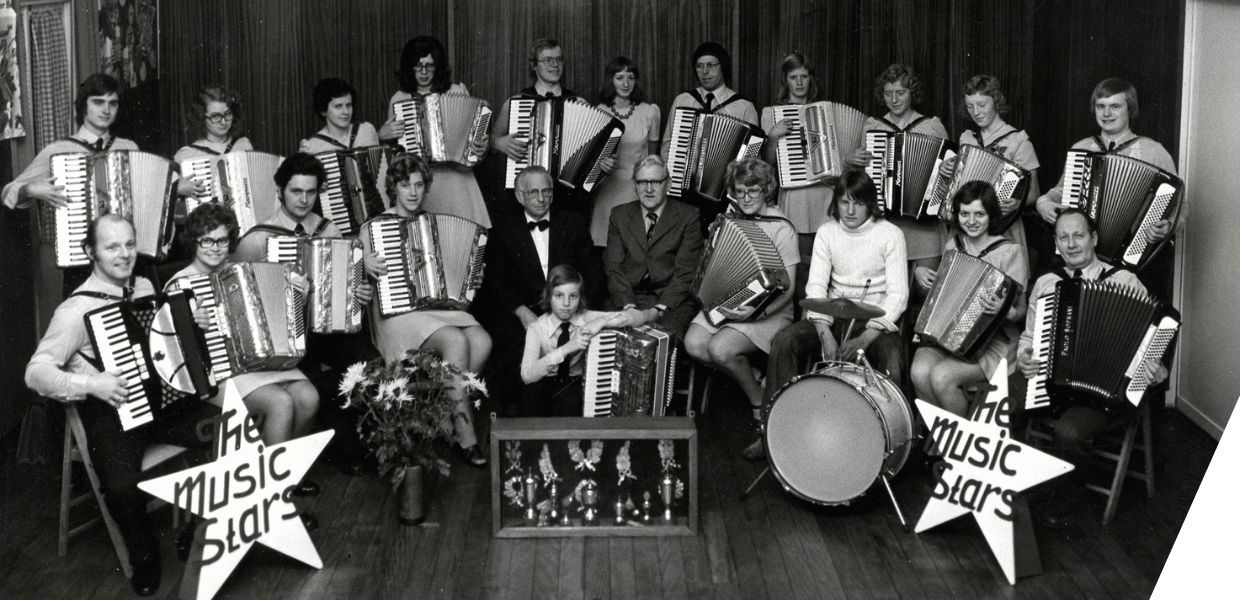Polifonia, a three-year Horizon2020 project led by the University of Bologna brought together experts from musicology, computer science and digital humanities. It aimed to foster interdisciplinary research, encourage the preservation and exploration of Europe's diverse musical traditions, and to unlock and connect scattered knowledge about musical heritage. Polifonia established 10 pilots centred on new tools, datasets, ontologies, knowledge graphs and software.
New steps in the music realm with Linked Open Data
One key effort was the construction of a Knowledge Graph (a graph-structured database used to represent and operate on data) and the Polifonia Web portal.
The Knowledge Graph gathers several musical sources and 10 large datasets to enable cross-dataset information retrieval for music knowledge. The 10 datasets cover music from the early 1500s to modern times and are provided by stakeholders and partners (such as the Netherlands Institute for Sound & Vision's concert collection), existing collections (including a reference to Europeana Sounds offered in the MusoW catalogue) or publicly accessible data such as Wikidata. Also linked are the datasets of the MEETUPS, TUNES, BELLS, ORGANS and MUSICBO pilots.
The Polifonia Knowledge Graph uses Linked Open Data. This means that every entity in the graph, such as a piece of music or a composer, has its own unique identifier. The relationships between these entities are defined using machine-readable ‘triples’ that can be used to build advanced knowledge-based applications. A triple connects the entity being described (the subject) to another entity or a simple data value (the object), with a specific type of relation. For example, the information ‘Mozart composed the Moonlight Sonata’ would be represented by a triple with as subject an identifier for Mozart, as object an identifier for the Moonlight Sonata, and ‘composed’ as property. Publishing such triples without access restrictions produces Linked Open Data.
A key challenge in producing Linked Open Data are the differences in metadata between sources. In order to produce the Polifonia Knowledge Graph, the relevant properties in each source were mapped to the MusicMeta ontology. This is a data model specifically developed to cater to the needs of Polifonia users, as defined in user stories constructed after extensive research and user consultation with musicologists and general users. This made it possible to find, for example, all music titles together with their composers. In many sources, the identifiers were mapped to existing public lists of identifiers, such as Wikidata, making it easier to find information about that entity.
Polifonia engineers used tools such as SPARQL Anything, developed by Polifonia partners, to convert data from the sources to linked data, which was made available via SPARQL endpoints. The Polifonia Web Portal can access these endpoints to query the data, presenting the combined results to the users and allowing them to seamlessly step between data from different sources.
The Polifonia Web Portal provides five specialised search sections, each corresponding to access points preferred by users, as evidenced by dedicated user studies. This approach enables efficient search and exploration of the musical heritage and it is supported by autocomplete suggestions and filtering options to refine the research. By harmonising information from various sources, the portal unveils hidden connections and narratives within the musical landscape. The user experience of the portal is designed to favour serendipitous discoveries rather than pre-determined paths.
The value of stakeholder-driven development in the cultural heritage sector
Although the main audience of the project’s work is academia, we sought to involve a broader audience including public institutions, heritage, education and industry to ensure that the products meet user demands and longevity.
The project also explored how cultural heritage-related research could help solve problems for commercial and industrial partners, who may not usually consider getting involved in such initiatives. This exchange between researchers and stakeholders offered valuable cross-pollination and provided insights on both sides. For instance, Polifonia researchers explored how Polifonia’s own ontology, MusicMeta, could address information retrieval challenges for the stakeholder Deezer, and could potentially do that for other music streaming companies. In the future, it will become increasingly possible to create interoperable Music Knowledge Graphs from (large-scale and noisy) music industry data.
Involving stakeholders also means that the products developed were embedded in the stakeholders’ infrastructure from the very beginning, as happened with the ORGANS database in the case of the Dutch Institute of Organ Art, and with the BELLS database in the case of the Italian Ministry of Culture. Tools developed for music analysis (TONALITIES, FACETS) or music perception, such as haptic devices (ACCESS), have also been used by early adopters in education.
The open source Polifonia ecosystem
Polifonia follows the principles of open source software and FAIR (findability, accessibility, interoperability, and reusability). All software components developed by Polifonia can be reused in conjunction as well as in isolation.
Software development took place using the GitHub platform, which allows software to be shared while transparently tracking changes and versions. This enabled the creation of the so-called ‘Polifonia Ecosystem’, with relevant components of the research process (Data, Tools, and Reports) documented in GitHub Repositories. A rulebook defines how to set up these repositories so that eventually information about the components can be harvested and users can navigate through the components and their dependencies thanks to the Polifonia Ecosystem. The core is a readme.md file which contains all needed annotations. By registering the GitHub repository in Zenodo, automatic releases of stable versions to Zenodo are executed.
Find out more
Interested in learning more about Polifonia? Visit the Polifonia website and watch the video tutorials to get started with the tools. You can also watch a webinar on this project held earlier this month with the support of EuropeanaTech, and join the Community now!


